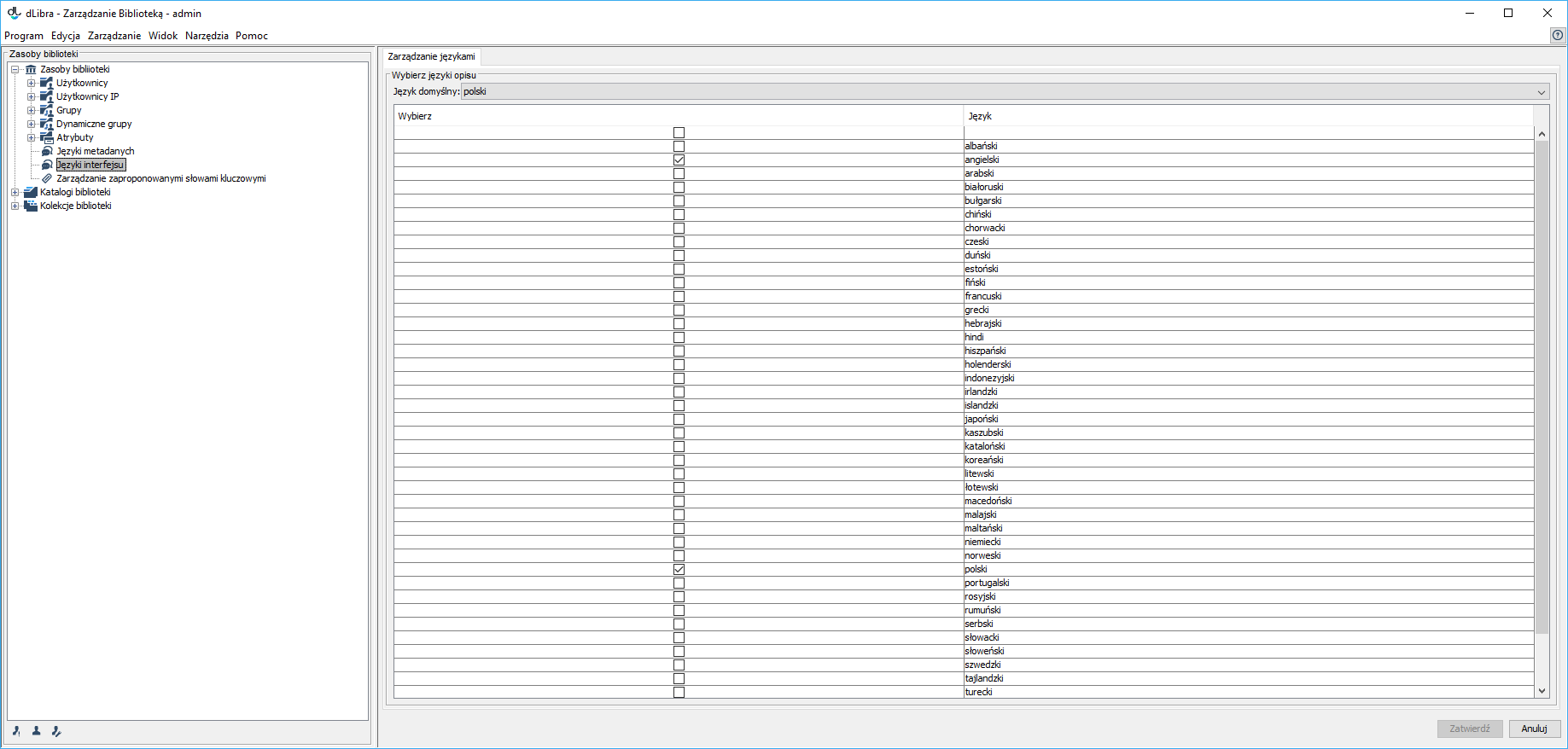The web application in the dLibra system can have various language versions, for example, buttons, labels, etc. in English for a person visiting the digital library from England, and in Polish for a visitor from Poland. Those languages are interface languages. By default, there are two interface languages in the dLibra system: English and Polish. For adding a new interface language, a translation of labels, buttons, etc. is needed. Besides, the names and descriptions of new collections must be entered in all interface languages so that users of the library website can see it in the same way, regardless of their language (because collection names are displayed on the web pages).
There are also metadata languages in the dLibra system. They are for entering edition metadata, that is, bibliographic descriptions, descriptions, and comments for editions.
A user of the website can choose both the metadata language for a particular edition and the interface language. A metadata language is selected independently from an interface language, so a user can select, for example, English as the interface language and Polish as the metadata language.
We can determine the languages to be used in our system by selecting the “Interface languages” or “Metadata languages” node (see the image below). The currently used languages are selected in a table on the panel. In order to add a language, its checkbox should be selected. In order to remove a language, its checkbox should be deselected. A default language must be selected for each of the two language types (interface and metadata). The default language is used when the system does not have a language appropriate for the user. For example, if there are two interface languages, English (default) and Polish, and there is one metadata language, Polish (default), then a user visiting the library website from Germany will see the interface elements in English and the metadata in Polish because neither language list contains German.
